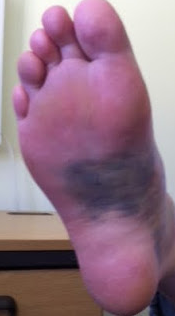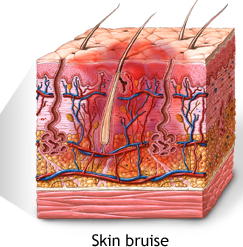How many types of nail fungus are there? Which microorganisms cause nail fungus infections? Discover the various types of nail fungus you should seek treatment for once they show up on your fingernails or toenails.
The nasty fungus has a way of showing up on your nails as if causing peeling feet and hands is not enough. When the fungus attacks the nails they become unsightly and you may want to hide them when amidst friends or at work. However, hiding the infection will not make the fungus go away. Treating with it will.

In order for medications of killing the fungus to work, it is important to be sure that indeed you have nail fungus symptoms and not psoriasis, eczema, nail trauma or yellow nail syndrome. These conditions are often confused with nail fungus. The only way to be sure is by visiting a podiatrist who will take a sample of the infected nail and view it under a microscope to determine the type of nail fungus ailing you since there are different types, as you will find out in this write-up.
Different Types of Nail Fungus and Causes
What causes nail fungus is a host of microorganisms and factors. Different types of nail fungus are causes by different microorganisms. These include fungi, mold and yeast. Although these parasites are related, they manifest themselves in different ways on a nail, which they attack.
Other t types of nail fungus occur in certain areas and not others. This is because of the climatic conditions experienced there that make the environment conducive for the microorganisms to thrive. Therefore, you will have different types of nail fungus in one part of the country or world and another in the in other country, city or town.
The factors too that contribute to the infections vary. They range from the health of the person to where he comes from. If you come from a family with a history of a certain type of fungal nails, you may experience it as well sometimes in your life, especially when you start to age.
Common causes of the nail fungus types include:
- Dermatophytes, which are present in Western countries
- Non-dermatophytic molds, common in the tropics
- Candida, found in hot and humid areas
- Genetics
- Weak immune system
- Unintentional trauma
Types of Nail Fungus Pictures – Tell the Difference
Looking at infected nails, you can tell recent infections to the more advanced kinds. Since it is difficult to be sure about an infection by just looking at your nails, then looking at different types of nail fungus pictures would help you know at what stage your fungal nail infection has reached.

There are three common types, the first being marked with mild symptoms. The nails may appear discolored at the edge and furthest corner. The nail may still appear normal because most of it is not discolored.
A second type is marked by moderate symptoms. The nail begins to crumble at the white edges due to the infection. Pieces may start to fall away from the nail as the discoloration progresses to cover the whole lunula, which is the top part of the nail.
The third types of nail fungus pictures are those with fully developed symptoms. The infected digit appears deformed and the nail has holes or comes off from the nail bed. At this point, the nail is also unsightly and the infected digit may become bulbous.
5 Types of Toe Nail Fungus
There are five different types of toenail fungus depending on where the fungus attacks. Similarly, the underlying cause of the fungus also determines the type. These types of toe nail fungus include:
- Proximal Subungal Onchomycosis- this attacks a newly formed nail plate through any folds
- Distal subungal Onchomycosis- this kind is responsible for penetrating the both the nail bed and the underside nail plate
- White Superficial Onchomycosis- this penetrates the outside part of the nail also known as the lunula
- Candida Onchomycosis – this type strikes in an already damaged nail. Although it occurs in toenails, it is quite rare it is more prevalent in fingernails.
- Paronchya- these types of toe nail fungus attacks the sides and edges of toes.
Your doctor should be able to identify the type of fungus you have in order to prescribe oral and topical antifungal medications that will diminish it completely. You cannot diagnose yourself toe nail fungus or self medicate.

How to Determine Types of Nail Fungus Infections
The most difficult thing to do when you want to use the best nail fungus medication is determining the types of nail fungus infections. However, if you do visit a podiatrist, he or she can easily tell the type fungi that have attacked you from simply studying a piece of your nail or debris under the microscope.
This is the only way to determine the medicines that would work without fail in diminishing your type of fungus. Furthermore, depending on the drugs you will be put on, you may require supervision by the doctor regularly to ensure that your vital organs such as the liver and kidney are in good shape.
Acrylic Nail Fungus Symptoms
If you love to achieve longer and stronger nails with artificial nails, then you stand at risk of acquiring nail fungus. Acrylic nail fungus symptoms occur if you make use of nail technicians who are not professionals to apply the artificial nails on your fingers or toes. Similarly, if the acrylic nails are applied using unhygienic tools, you are likely to contract fungus.
Furthermore, you should not use artificial nails for more than a month. This is because an extended time of use renders the natural nails vulnerable to a fungal infection. Use the acrylic nails whenever possible for example when going to a special event, but not all the time because they will cause your natural nails not to breathe.
 eTopical Precious Finds
eTopical Precious Finds


